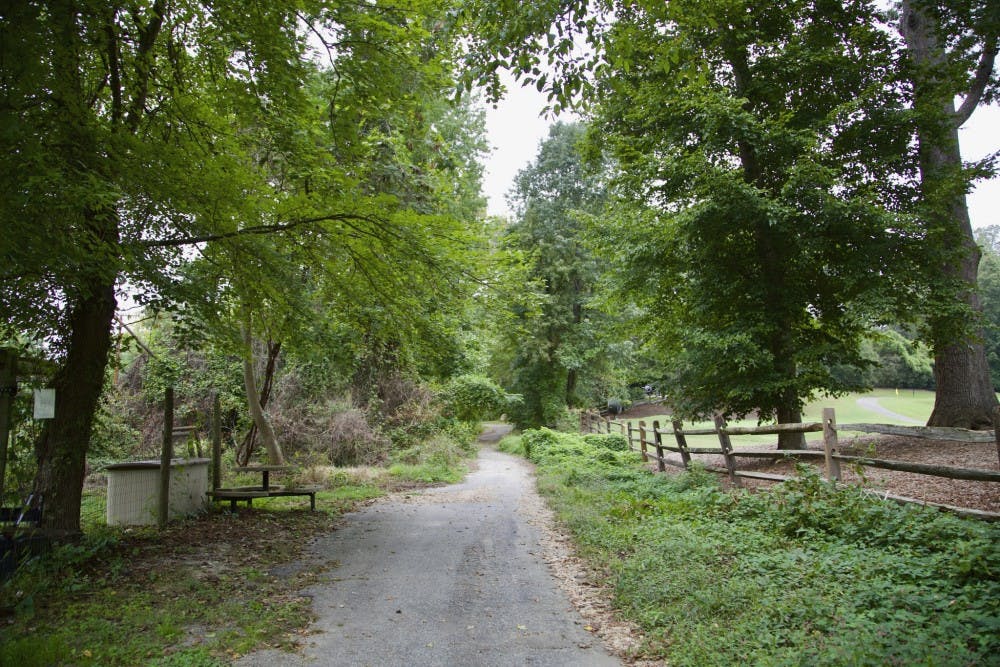“The vast majority of our students have no idea that there’s a trail on campus that would take them to the [James] river,” said Rob Andrejewski, the University of Richmond's director of sustainability. “You take this trail, you go over the Huguenot Bridge and Pony Pasture is right there.
"It’s so close to campus, it doesn’t make any sense that not everybody spends time there.”
Andrejewski is talking about the Gambles Mill Corridor, which is a trail in the southern portion of campus that runs from UR Drive to River Road, adjacent to the Country Club of Virginia. It once served as a rail line that was used for delivering coal to the campus steam plant. All that remains now is a tattered service road that acts as a trail.
“[The Gambles Mill Corridor's] been a paved path for decades,” Andrejewski said. “It’s washed out, and it needs some resurfacing. It’s something that we planned on doing since our Campus Master Plan, which was written in 2011.”
Alongside the trail runs Little Westham Creek, which originates in Tuckahoe about two miles north-west of campus. The dam under the Tyler Haynes Commons pools this water, creating Westhampton Lake. The creek then continues to flow out the spillway to join the Gambles Mill Corridor, until reaching the East Branch Tuckahoe Creek, and finally the James River.
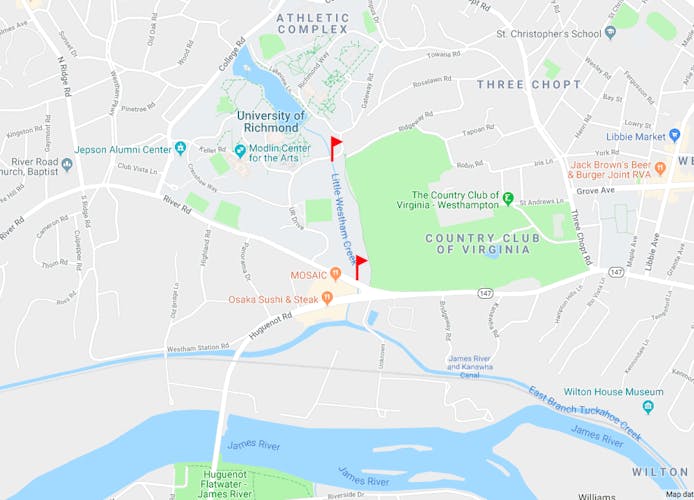
The Gambles Mill Corridor trail runs from UR Drive to River Road. Image courtesy of Robbie Kent
“I’ve been at UR for four years, and this is by far the most washed out [Little Westham Creek's] ever been,” Andrejewski said. “This year has had the second-wettest weather since we’ve been recording weather history in Richmond.”
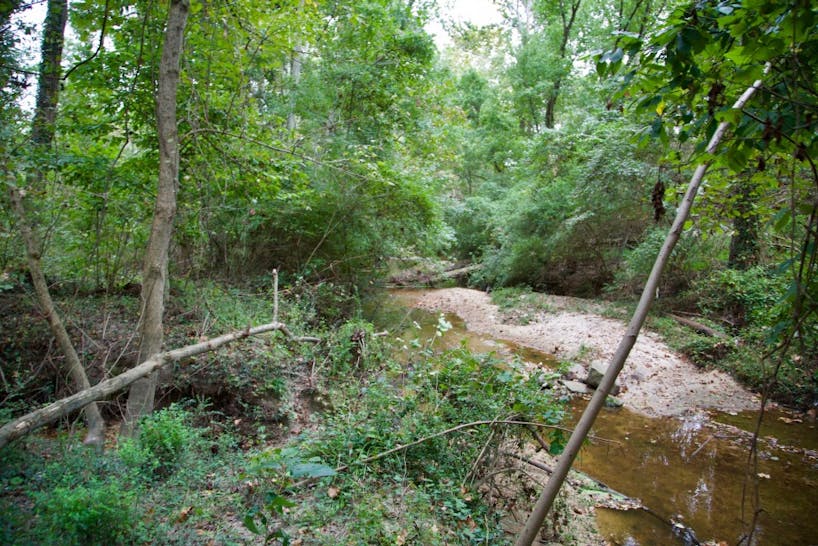
Little Westham Creek. Image courtesy of Nina Mauney
Construction to restore the Gambles Mill Corridor along with Little Westham Creek began the week of March 18, at no cost to the university.
This is because of the Chesapeake Bay Total Maximum Daily Load (TMDL) that was put into place in 2010, a "pollution diet" to restore clean water in the Chesapeake Bay and the region's streams, creeks and rivers. It limits the amount of phosphorus, nitrogen and other sediment flowing into the James River, according to the Environmental Protection Agency.
In its current state, Little Westham Creek is bringing too many of these chemicals into the James River due to its tall banks and straight path.
"Even in a huge rain event, [Little Westham Creek's] not going to overflow its banks," Andrejewski said. "Anything on the road, anything in a lawn, is going to eventually make its way into the water," he said.
Enjoy what you're reading?
Signup for our newsletter
This includes plant fertilizer, which contains high amounts of nitrogen and phosphorus.
If these chemicals are allowed to reach the bay, they can cause algae blooms that block sunlight from reaching underwater plants, starving the fish of oxygen, according to the Hampton Roads PDC.
However, if Little Westham Creek had banks that were shallower and closer together, and the creek flowed in an 'S' pattern, the banks could overflow in a rain event into a floodplain, "...allowing the water to percolate through, trapping the sediment, and then that stuff does not head further downstream into the James, which eventually goes into the Chesapeake Bay," Andrejewski said.
Because the city of Richmond has to meet TMDL, it is responsible for taking care of its waterways like Little Westham Creek. One of the ways this is accomplished is through a process called "mitigation banking," which is the restoration of a waterway in exchange for "compensatory mitigation credits," according to the Environmental Protection Agency.
Whenever a homeowner or a developer wants to do something that will negatively affect a waterway in the Chesapeake Bay area, they must also do something positive to balance it out. In other words, they owe the city of Richmond mitigation credits.
However, these credits can be purchased from third parties that specialize in stream and waterway restoration. That is where Resource Environmental Solutions (RES), a nationwide ecological services firm, comes in.
RES wants to restore Little Westham Creek to get mitigation credits that it can sell to developers that need to offset their negative impact on a waterway but do not have the means to do it themselves.
In return for getting to use UR's land to obtain these credits, they have offered to transform the Gambles Mill Corridor area into the Eco-Corridor for free.
“We work with the university, the city and other localities to say, 'We all have to fix the water quality, here’s a spot we can do it,'" said Aaron Revere, director of corporate development at RES. "In exchange for doing that, we have worked on a whole Eco-Corridor concept with your colleagues at the university.”
The name "Eco-Corridor" refers to the restoration of Little Westham Creek and the Gambles Mill Corridor, as well the removal of invasive species.
Using a design plan from Waterstreet Studio, a landscape architecture firm in Richmond, RES will be making the stream flow in an S pattern, making the banks shallower and closer together, and increasing the width of the floodplain, all in an effort to reduce the amount of nitrogen and phosphorus making it to the bay.
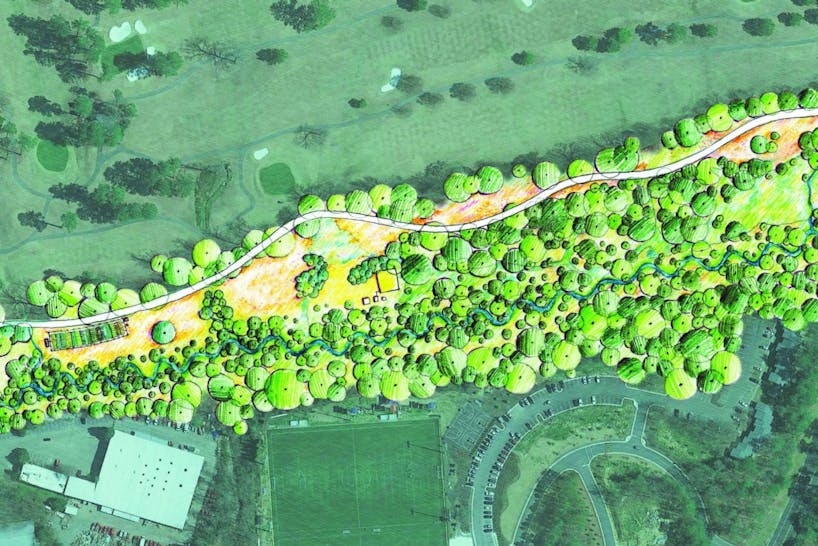
Restoration rendering. Image via RES
RES has already made efforts to eradicate invasive species, such as vines and other plants, from the area. Last spring, it subcontracted a company called Goat Busters, which brought 80 goats to the Gambles Mill Corridor to eat away at the foreign plants.
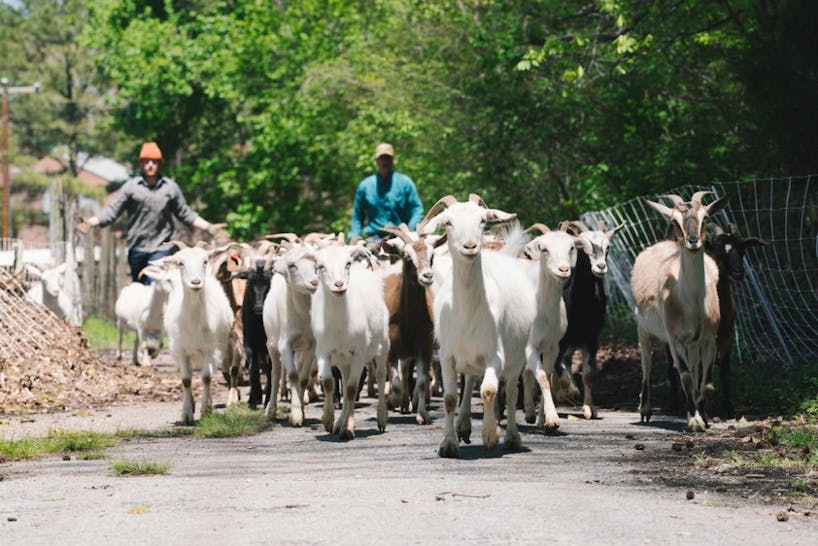
Goats patrol the Gambles Mill Corridor trail. Photo via UR's Office for Sustainability
Aside from the removal of invasive species, Andrejewski emphasized the preservation of the native wildlife.
“There are foxes that live down there, there’s raccoons, there’s squirrels, we saw a hawk there the other day," Andrejewski said. "There’s a lot of animals that call that area home. We can be intentional about taking care of the things that take care of us.
"We’re losing pollinators rapidly. About one-third of the fruits and vegetables that we eat are pollinated by bees, hummingbirds, butterflies, bats and other species, and we should be taking care of the land to support them."
RES will be constructing a pollinator meadow, complete with native flowers and flowering shrubs "...so that [the Eco-Corridor] will become welcome to those plants and animals," Andrewjewski said.
Other improvements to the Eco-Corridor will include realigning and repaving the Gambles Mill Corridor, creating paths to get to the creek, creating spaces for outdoor classes, reintroducing native plants to the area and implementing a new water line to the community garden – located at the beginning of the trail – to name a few.
“This trail is going to be incredible for biking and jogging, and it’s going to be [handicap] accessible” Andrejewski said. “For every tree that gets removed we’re going to plant 50, and just make it a much better site for the local ecosystem."
Some students and clubs already frequent the stream, such as the Outdoor Adventure and Recreation Program.
"They do trips regularly," Andrejewski said. "Geography and environmental studies classes do things, some biology classes do things."
The new spaces for outdoor classes present an opportunity to connect a broader range of students to this ecosystem on campus.
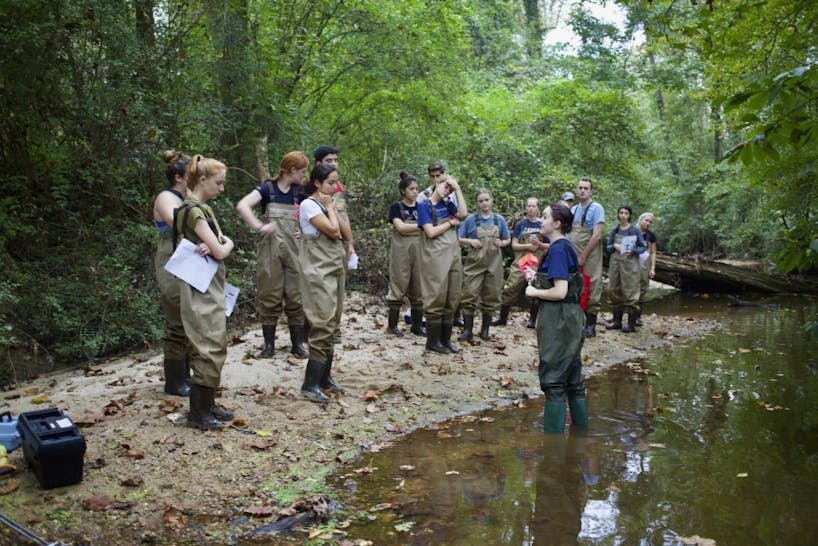
Students in Physical Geography (GEOG 250) measuring the physical characteristics of Little Westham Creek. Photo courtesy of Nina Mauney
“For me, being able to do this project that benefits the city of Richmond, benefits the James River, make this incredible new feature on campus and not have it incur any costs so we can do a lot of other projects, is this biggest win going,” Andrejewski said.
Construction on the Eco-Corridor should be complete within six to eight months. To learn more about the Eco-Corridor project, read The Collegian's previous article or visit UR's Eco-Corridor page for more information.
Contact features writer Robbie Kent at robbie.kent@richmond.edu.
Support independent student media
You can make a tax-deductible donation by clicking the button below, which takes you to our secure PayPal account. The page is set up to receive contributions in whatever amount you designate. We look forward to using the money we raise to further our mission of providing honest and accurate information to students, faculty, staff, alumni and others in the general public.
Donate Now
